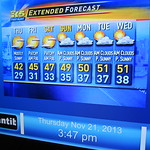Multimodality
Multimodality refers to the combination of multiple modes of communication and expression in the conveyance of information or the creation of meaning. In the context of media studies, linguistics, and communication theory, multimodality examines how text, audio, visual, gestural, and spatial modes work together to create messages and meanings that are more complex and nuanced than the sum of their parts. This approach challenges the traditional primacy of written or spoken text by acknowledging the significance of other semiotic resources in communication.
Overview[edit | edit source]
Multimodality recognizes that communication is not solely reliant on language but involves various modes that can complement, enhance, or even contradict each other. These modes include, but are not limited to, written language, spoken language, visual images (still and moving), music and sound, gestures, and spatial arrangements. The concept has gained prominence with the advent of digital media, which allows for the seamless integration of these modes into single communicative acts or artifacts.
Theoretical Background[edit | edit source]
The theoretical underpinnings of multimodality can be traced back to the work of semiotics and social semiotics, particularly the work of scholars like Gunther Kress, Theo van Leeuwen, and Roland Barthes. Kress and van Leeuwen, for instance, have been instrumental in developing a grammar of visual design, which looks at how visual elements can be used systematically to convey meaning in a manner analogous to the grammar of spoken or written language.
Applications[edit | edit source]
Multimodality has applications across a wide range of fields and disciplines. In education, it has led to a reevaluation of how knowledge is transmitted and received, advocating for pedagogical strategies that incorporate multiple modes of representation to cater to diverse learning styles. In digital media, it informs the design and analysis of digital texts and environments, where the integration of text, image, sound, and interactivity offers rich, immersive experiences. In marketing and advertising, understanding how different modes interact can enhance the effectiveness of campaigns by engaging multiple sensory channels of the target audience.
Challenges and Criticisms[edit | edit source]
One of the challenges in studying multimodality is the complexity of analyzing and interpreting the interplay of different modes. Additionally, there is an ongoing debate about the extent to which the frameworks and tools developed for the analysis of language can be applied to other modes of communication. Critics also point out that the emphasis on digital forms of communication may overlook the multimodal nature of traditional media and everyday communicative practices.
Future Directions[edit | edit source]
As digital technology continues to evolve, the field of multimodality is likely to expand and diversify. Emerging areas of interest include virtual reality (VR), augmented reality (AR), and mixed reality (MR), which offer new possibilities for multimodal interaction and communication. Additionally, the increasing importance of user-generated content on social media platforms presents new challenges and opportunities for multimodal analysis.
| This article is a stub. You can help WikiMD by registering to expand it. |
Search WikiMD
Ad.Tired of being Overweight? Try W8MD's NYC physician weight loss.
Semaglutide (Ozempic / Wegovy and Tirzepatide (Mounjaro / Zepbound) available. Call 718 946 5500.
Advertise on WikiMD
|
WikiMD's Wellness Encyclopedia |
| Let Food Be Thy Medicine Medicine Thy Food - Hippocrates |
Translate this page: - East Asian
中文,
日本,
한국어,
South Asian
हिन्दी,
தமிழ்,
తెలుగు,
Urdu,
ಕನ್ನಡ,
Southeast Asian
Indonesian,
Vietnamese,
Thai,
မြန်မာဘာသာ,
বাংলা
European
español,
Deutsch,
français,
Greek,
português do Brasil,
polski,
română,
русский,
Nederlands,
norsk,
svenska,
suomi,
Italian
Middle Eastern & African
عربى,
Turkish,
Persian,
Hebrew,
Afrikaans,
isiZulu,
Kiswahili,
Other
Bulgarian,
Hungarian,
Czech,
Swedish,
മലയാളം,
मराठी,
ਪੰਜਾਬੀ,
ગુજરાતી,
Portuguese,
Ukrainian
Medical Disclaimer: WikiMD is not a substitute for professional medical advice. The information on WikiMD is provided as an information resource only, may be incorrect, outdated or misleading, and is not to be used or relied on for any diagnostic or treatment purposes. Please consult your health care provider before making any healthcare decisions or for guidance about a specific medical condition. WikiMD expressly disclaims responsibility, and shall have no liability, for any damages, loss, injury, or liability whatsoever suffered as a result of your reliance on the information contained in this site. By visiting this site you agree to the foregoing terms and conditions, which may from time to time be changed or supplemented by WikiMD. If you do not agree to the foregoing terms and conditions, you should not enter or use this site. See full disclaimer.
Credits:Most images are courtesy of Wikimedia commons, and templates, categories Wikipedia, licensed under CC BY SA or similar.
Contributors: Prab R. Tumpati, MD




